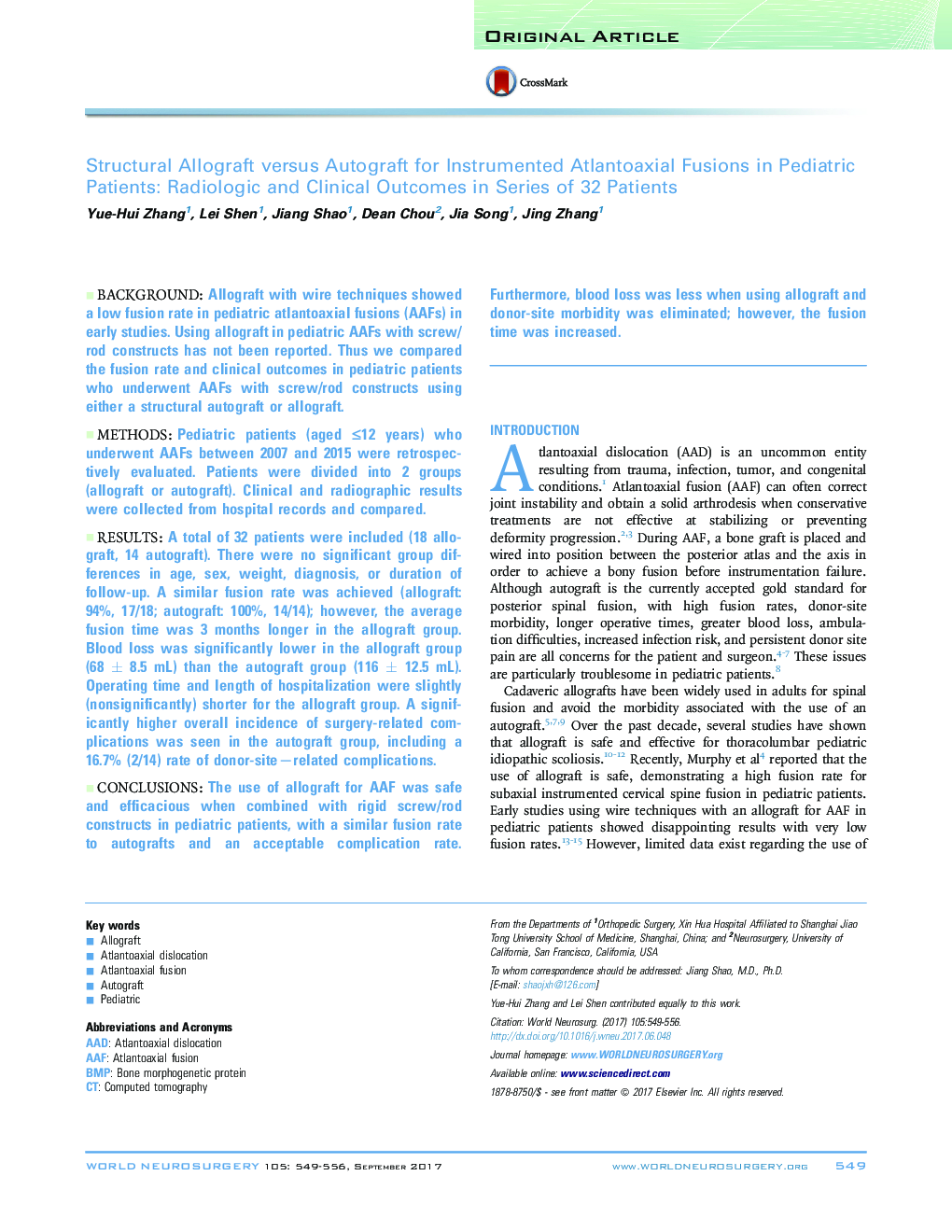| Article ID | Journal | Published Year | Pages | File Type |
|---|---|---|---|---|
| 5634242 | World Neurosurgery | 2017 | 8 Pages |
BackgroundAllograft with wire techniques showed a low fusion rate in pediatric atlantoaxial fusions (AAFs) in early studies. Using allograft in pediatric AAFs with screw/rod constructs has not been reported. Thus we compared the fusion rate and clinical outcomes in pediatric patients who underwent AAFs with screw/rod constructs using either a structural autograft or allograft.MethodsPediatric patients (aged â¤12 years) who underwent AAFs between 2007 and 2015 were retrospectively evaluated. Patients were divided into 2 groups (allograft or autograft). Clinical and radiographic results were collected from hospital records and compared.ResultsA total of 32 patients were included (18 allograft, 14 autograft). There were no significant group differences in age, sex, weight, diagnosis, or duration of follow-up. A similar fusion rate was achieved (allograft: 94%, 17/18; autograft: 100%, 14/14); however, the average fusion time was 3 months longer in the allograft group. Blood loss was significantly lower in the allograft group (68 ± 8.5 mL) than the autograft group (116 ± 12.5 mL). Operating time and length of hospitalization were slightly (nonsignificantly) shorter for the allograft group. A significantly higher overall incidence of surgery-related complications was seen in the autograft group, including a 16.7% (2/14) rate of donor-siteârelated complications.ConclusionsThe use of allograft for AAF was safe and efficacious when combined with rigid screw/rod constructs in pediatric patients, with a similar fusion rate to autografts and an acceptable complication rate. Furthermore, blood loss was less when using allograft and donor-site morbidity was eliminated; however, the fusion time was increased.
